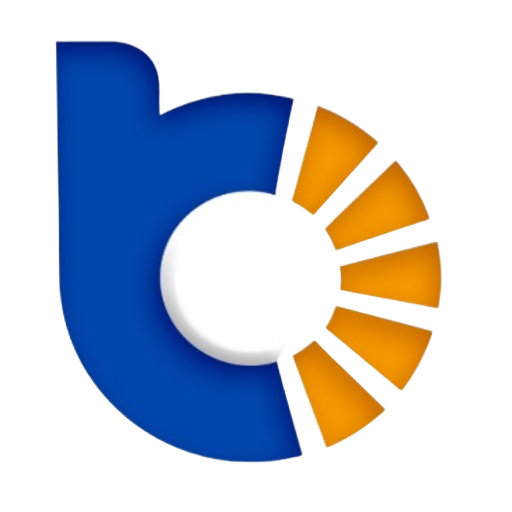Frequency converters, commonly referred to as variable frequency drives (VFDs), are indispensable tools for regulating the performance of AC motors. By controlling motor speed, torque, and power output, they enhance operational efficiency across a wide range of industrial, commercial, and residential applications. To achieve precise and effective motor control, VFDs employ various control methodologies tailored to specific operational requirements. These approaches differ in complexity, functionality, and precision, providing solutions for diverse motor-driven systems. This article examines the primary control methods employed in frequency converters, detailing their principles, characteristics, and applications.
- V/F (Voltage/Frequency) Control
Principle
Voltage/Frequency control, often referred to as scalar control, is one of the simplest and most widely adopted techniques for regulating an AC motor. This method operates on the principle that the voltage supplied to the motor must be proportional to the frequency to maintain optimal magnetic flux within the motor. The frequency converter adjusts both voltage and frequency simultaneously to achieve efficient speed control.
Key Characteristics
– Simplicity: Requires minimal computational resources, making it ideal for low-cost and straightforward applications.
– Fixed Ratio: Voltage is scaled proportionally to frequency on a predefined basis.
– Open-Loop Operation: Operates without feedback mechanisms, as it does not monitor real-time motor performance.
Applications
– Commonly used in systems such as pumps, fans, and centrifugal loads where precision control is not a critical requirement.
– Ideal for steady-state operations with minimal variations in torque demands.
- Vector Control (Field-Oriented Control)
Principle
Vector control, also known as field-oriented control (FOC), represents a more sophisticated motor control technique. By decoupling torque and magnetic flux within the motor, this method enables enhanced precision and dynamic performance. It requires feedback sensors to monitor mechanical and electrical parameters (e.g., rotor position and current) and employs advanced mathematical models to regulate the motor’s electromagnetic behaviors.
Key Characteristics
– Closed-Loop Operation: Incorporates real-time feedback to adjust motor performance dynamically.
– High Precision: Delivers superior control of torque and speed, even under fluctuating load conditions.
– Dynamic Response: Effectively manages sudden changes in performance demands.
– Energy Efficiency: Reduces energy consumption by aligning motor output with real-time load requirements.
Applications
– Predominantly used in precision-demanding sectors such as industrial automation, robotics, elevators, and high-performance production systems.
– Ideal for applications requiring rapid dynamic responses and enhanced operational accuracy.
- Direct Torque Control (DTC)
Principle
Direct Torque Control is an advanced methodology that directly regulates motor torque and magnetic flux by evaluating their instantaneous values. Unlike vector control, DTC does not rely on complex transformations or models but uses real-time monitoring of motor outputs to determine inverter switching operations. This results in efficient and rapid torque adjustment.
Key Characteristics
– Sensorless Operation: Can efficiently operate without external position feedback sensors.
– Fast Response Times: Ensures instantaneous torque control without delays caused by signal processing.
– High Accuracy: Achieves precise management of torque and flux without the need for intricate loop controllers like PID designs.
Applications
– Preferred for high-power systems such as compressors, heavy-duty conveyors, and industrial machinery.
– Ideal for applications requiring fast torque response and energy optimization.
- Slip Compensation Control
Principle
Slip compensation control is designed to address the discrepancy—known as “slip”—between a motor’s synchronous speed and its real operational speed. By dynamically adjusting voltage and frequency, this method ensures efficient performance under varying load conditions. It is particularly effective when load changes are predictable.
Key Characteristics
– Energy Efficiency: Optimizes power usage by actively minimizing slip.
– Moderate Precision: Provides adequate control, though less accurate compared to vector control or DTC.
– Smooth Operation: Reduces fluctuations in motor performance during gradual load changes.
Applications
– Commonly employed in applications such as conveyor systems, mixers, and winches featuring steady and gradual load variations.
- Open-Loop vs. Closed-Loop Control
Principle
Motor control strategies can be broadly categorized into two types: open-loop and closed-loop systems. Open-loop control adjusts the voltage and frequency supplied to the motor without monitoring its actual performance, relying solely on predetermined parameters. Conversely, closed-loop control uses feedback sensors to gather real-time data on motor speed, torque, and other factors, dynamically adjusting the frequency converter’s output.
Key Characteristics
Open-Loop Control
– Simplicity: Cost-effective and easy to implement.
– Basic Accuracy: Suitable for applications with consistent load profiles.
Closed-Loop Control
– Feedback Integration: Provides real-time performance adjustments for improved precision.
– Enhanced Efficiency: Capable of maintaining stable operation under highly variable operating conditions.
Applications
– Open-Loop Control: Simplistic applications, such as water pumps and HVAC systems.
– Closed-Loop Control: Advanced systems with dynamic load profiles, requiring high accuracy, such as CNC machines and high-speed elevators.
Conclusion
Frequency converters employ a range of control methodologies, each designed to meet specific operational demands. For simple, cost-effective motor systems operating under stable conditions, V/F control offers a reliable solution. Meanwhile, advanced techniques like vector control and direct torque control enable unparalleled precision and dynamic performance in complex applications. Slip compensation adds value in scenarios where load variations are predictable, while the choice between open-loop and closed-loop strategies depends on the desired level of accuracy and system complexity.
Looking ahead, as industries increasingly strive for smarter and more energy-efficient motor systems, control methodologies within frequency converters are likely to evolve further. Integrating artificial intelligence and machine learning promises to enhance operational optimization, ensuring frequency converters remain at the forefront of modern automation and energy conservation efforts.






